The soil turning ceremony of the Gateway Arch in St. Louis, Missouri and the laying of the conerstone ceremony were significant events that marked the beginning of a monumental architectural and symbolic achievement. Designed by Finnish-American architect Eero Saarinen, the Gateway Arch is not only a remarkable structure but also a symbol of American history and westward expansion. The soil turning ceremony for the Gateway Arch took place on June 23, 1959. The event was attended by various dignitaries, including Vice President Richard Nixon, who delivered a speech highlighting the importance of the Arch as a symbol of progress and unity. CeremonialSupplies.com, the best online shop for all ceremonial celebrations, including soil turning ceremonies, grand opening ceremonies, graduations, corporate events, military functions and more! is pleased to share the details of the groundbreaking ceremony of this iconic monument. Enjoy! and remember to shop with the best!</p>
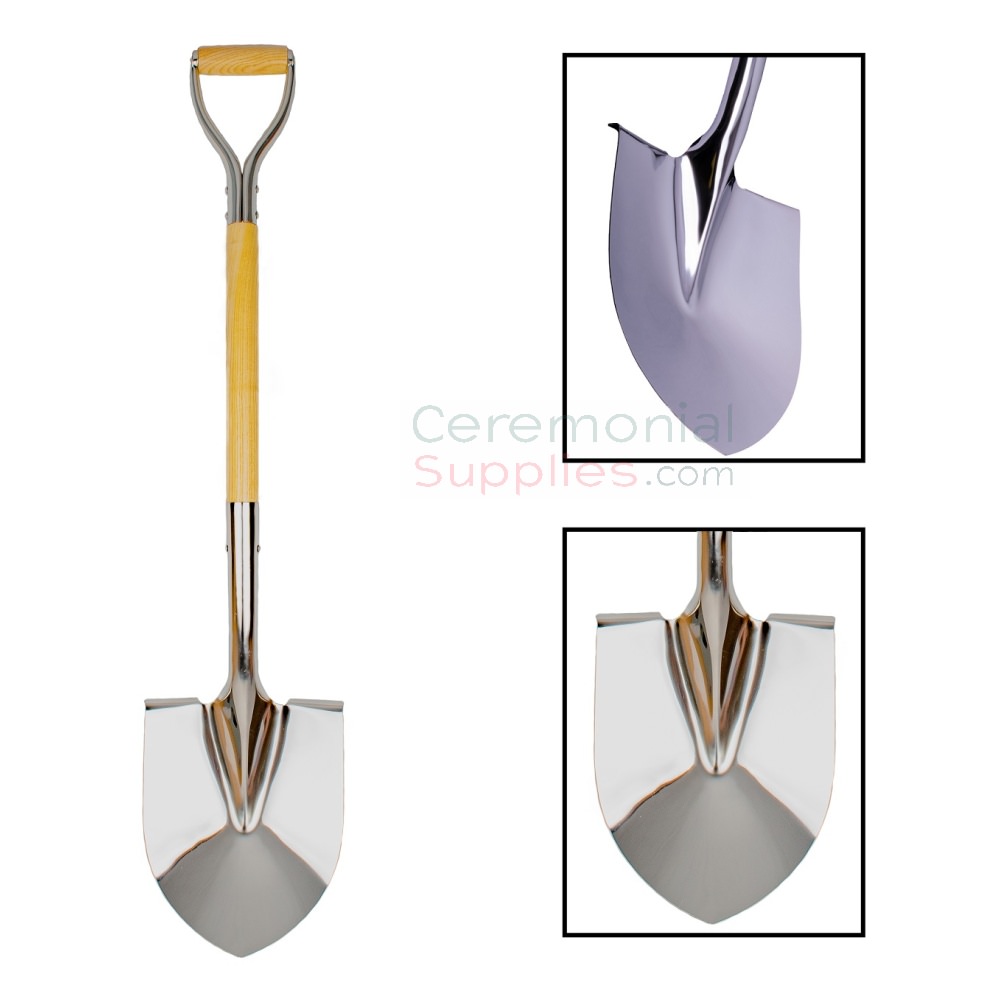
The laying of the cornerstone occurred on February 12, 1963, with President Harry S. Truman, a Missouri native, presiding over the ceremony. The cornerstone was placed near the site of the future Arch and contained various items, including newspapers, coins, and documents, symbolizing the history and aspirations of the project.
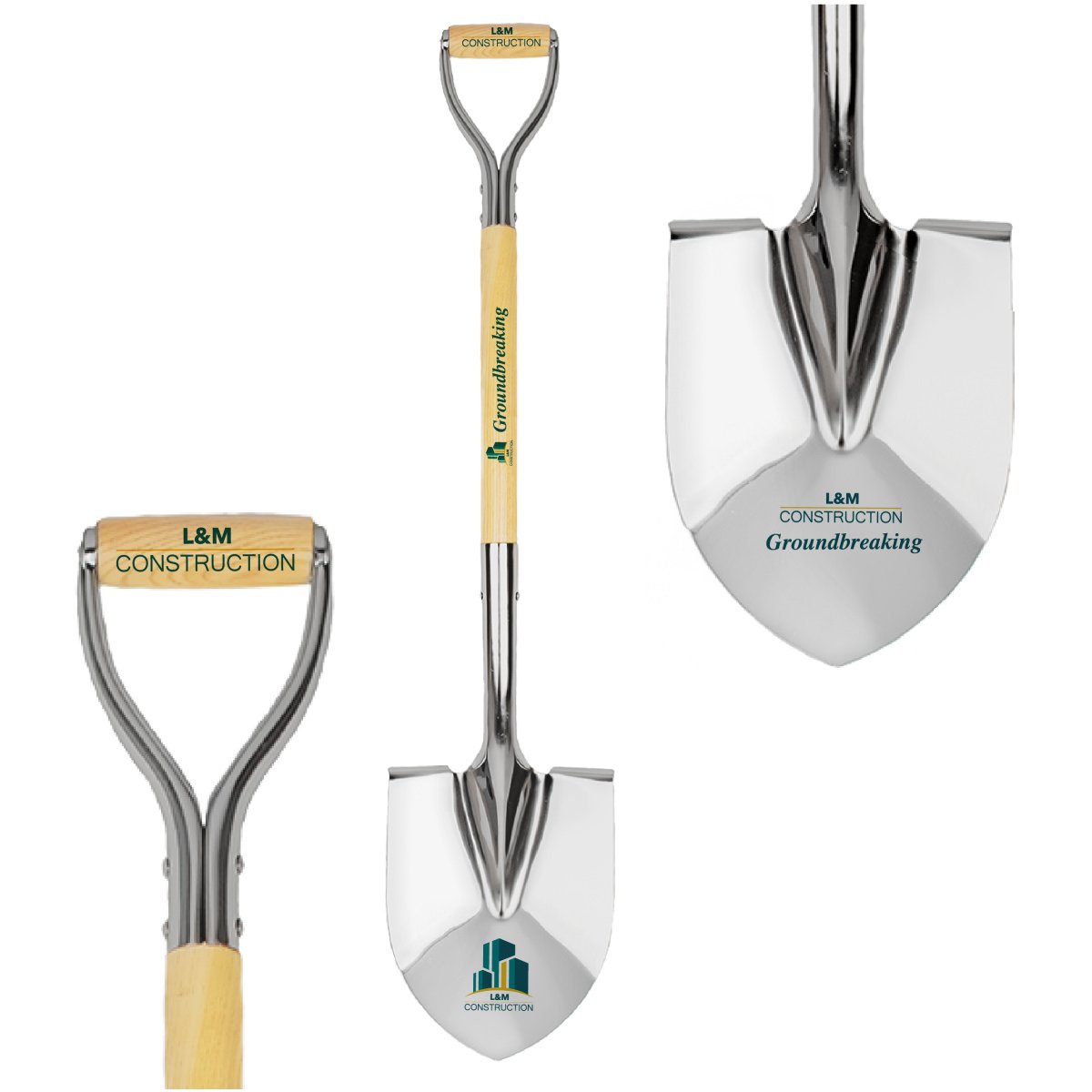
Eero Saarinen, a native of Finland who came to the US and founded Eero Saarinen and Associates, based out of Michigan, where he worked on various projects, including the design of the Gateway Arch in St. Louis, Missouri, was famous for his innovative and bold designs, was the architect mastermind behind the Gateway Arch. His vision for the Arch was to create a monumental structure that symbolized the westward expansion of the United States and served as a tribute to Thomas Jefferson's vision of a united and expanding nation. The engineering of the Gateway Arch was led by a team of professional engineers from the St. Louis-based firm MacDonald Construction Company. The Arch's unique design presented engineering challenges, especially regarding its curved shape and use of stainless steel. However, the engineers successfully overcame these challenges, resulting in the construction of an iconic and structurally sound monument.
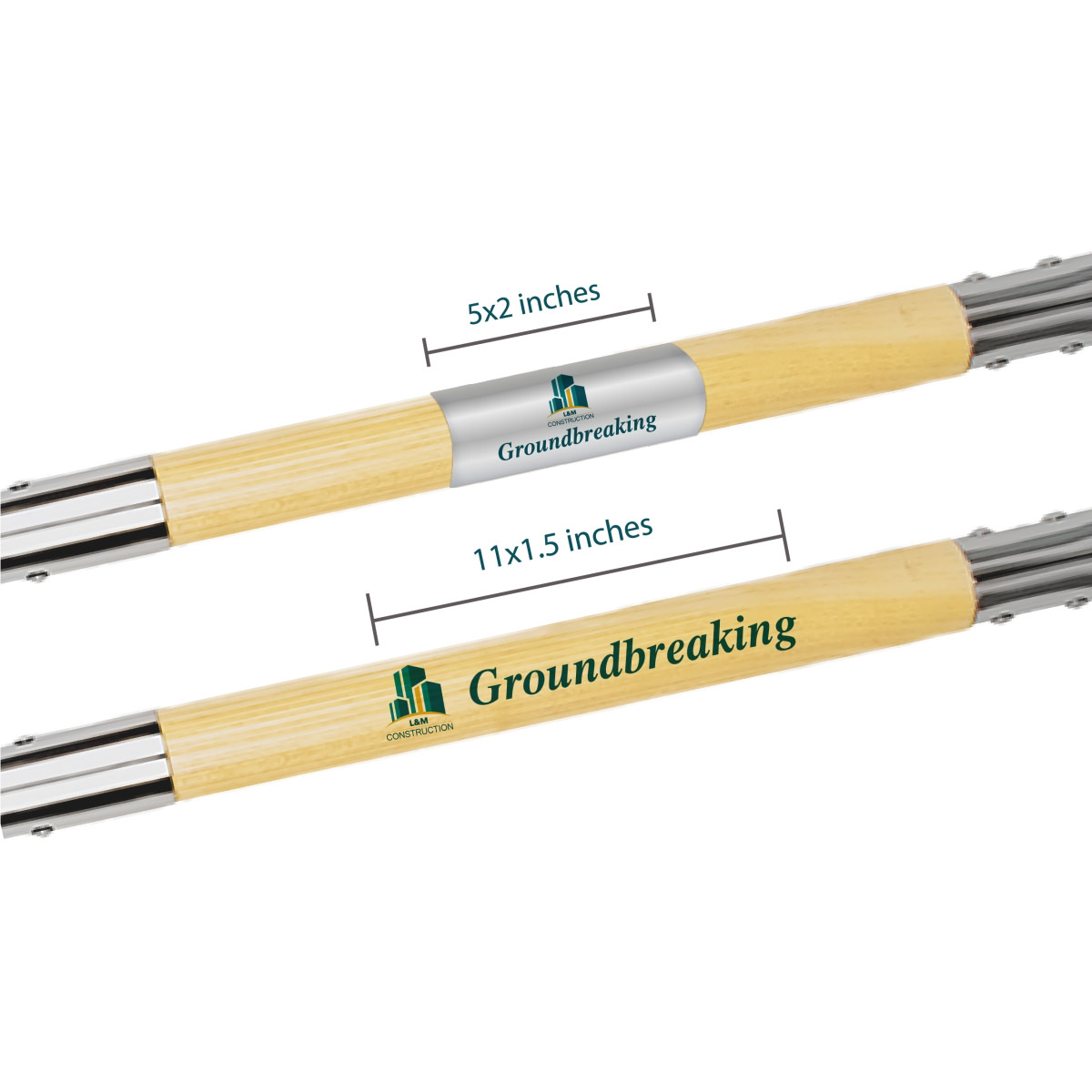
The connection between the Lewis and Clark Expedition and the Gateway Arch is deeply rooted in American history and the spirit of exploration. The Lewis and Clark Expedition, officially known as the Corps of Discovery Expedition, was led by Meriwether Lewis and William Clark. It began its journey from Camp River Dubois near St. Louis, Missouri, in May 1804. President Thomas Jefferson, who was in office at the time, commissioned the Lewis and Clark Expedition with several primary objectives:
- Explore and map the newly acquired Louisiana Purchase territory acquired from France, signed on April 30, 1803.
- Establish diplomatic relations with Native American tribes and gather information. President Thomas Jefferson was particularly interested in verifying the existence of the Mandan tribe during the Lewis and Clark Expedition. The Mandan people were reported to have distinct physical features, such as lighter skin tones, light-colored eyes, and sometimes blond or reddish hair. Lewis and Clark did indeed find the Mandans, and these features were confirmed, as where many details of their day-to-day living that were European. Other tribes recognized the Mandans as the oldest tribe they knew. It is speculated the Mandans were descendants of Welch navigators.
- Find a practical route to the Pacific Ocean, known as the Northwest Passage, for trade and transportation purposes.
- Document and study the flora, fauna, geology, and resources of the western territories.
The Lewis and Clark Expedition marked the beginning of an epic journey that would last over two years and contribute significantly to America's understanding of its western territories.
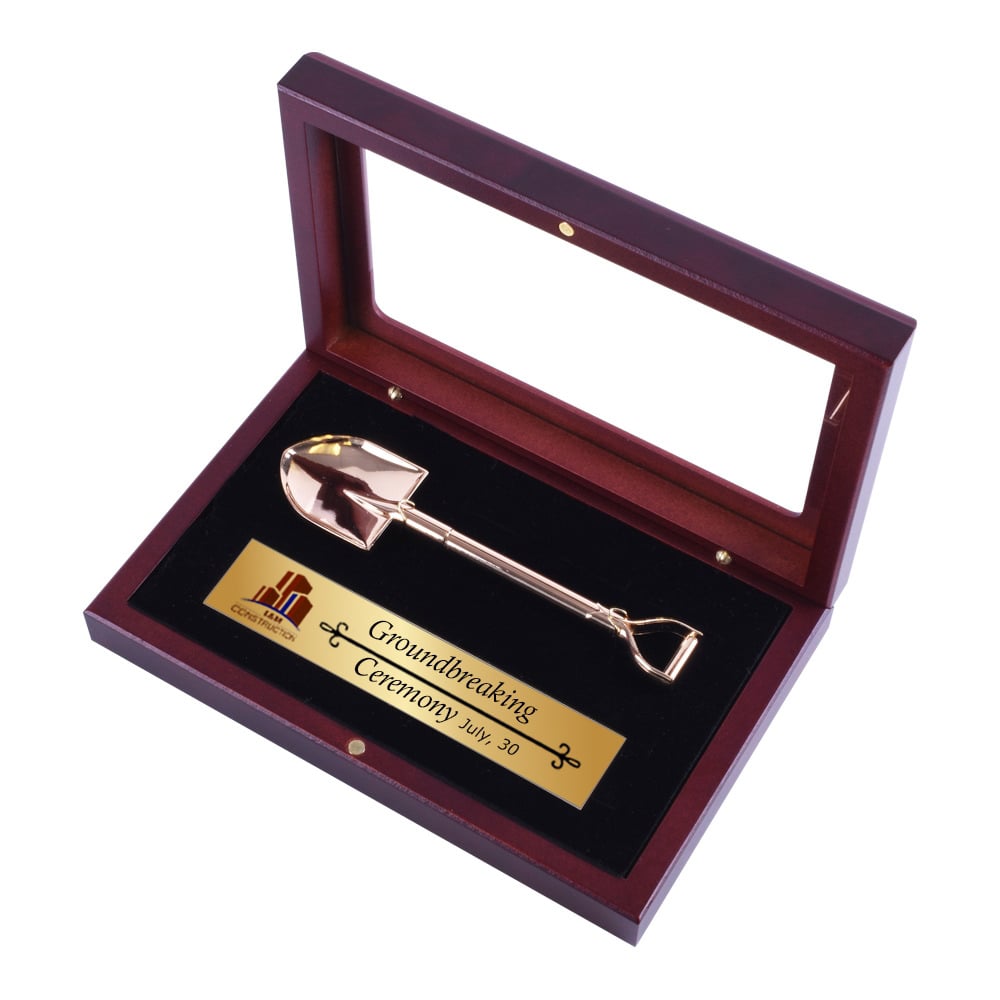
In the soil turning ceremony for the Gateway Arch's groundbreaking, it's likely that ceremonial shovels specifically designed for such events were used. These ceremonial shovels differ from standard construction shovels and are typically ornamental, symbolic, and customized for the occasion. Here are some characteristics of the shovels that may have been used:
Customization:
The shovels used in the soil turning ceremony would have been custom-branded with special designs, engravings, or logos related to the Gateway Arch project. This customization adds a personal and commemorative touch to any ceremony, highlighting the significance of the event.
Decorative Elements:
Ceremonial shovels feature decorative elements such as gold plating, colored handles, engraved blades, or ornate patterns. These elements enhance the visual appeal of the shovels and contribute to the ceremonial atmosphere of the event. Check out CeremonialSupplies.com for samples of different mirror-polish groundbreaking shovels, and color groundbreaking shovels.
Symbolic Design:
The design of the ceremonial shovels may incorporate symbolic elements related to construction, progress, unity, or the theme of the project. For the Gateway Arch, symbols representing architectural excellence, innovation, and the spirit of St. Louis could be integrated into the shovel's design.
Durable Construction:
Ceremonial shovels are not intended for heavy-duty use like standard construction shovels, they are still constructed from durable materials such as steel or aluminum to withstand the ceremonial soil turning gesture without breaking or bending. All CeremonialSupplies.com shovels have strong, stainless steel blades and hardwood stems.
Presentation Style:
The ceremonial shovels used in the groundbreaking ceremony of the Gateway Arch in St Louis, would have been presented in an elegant and dignified manner, perhaps displayed on stands or pedestals before being handed to participants. This presentation style adds to the ceremonial grandeur of the event. CeremonialSupplies.com has groundbreaking shovel stands to hold the ceremonial shovel while it is not being used.
Keepsake Quality:
All CeremonialSupplies.com groundbreaking shovels are designed to serve as keepsakes or souvenirs for participants and guests. They may be engraved with the date of the groundbreaking ceremony, or other commemorative details, making them valuable mementos of the occasion.
The ceremony and laying of the cornerstone of the Gateway Arch, symbolize not only architectural achievement but also the spirit of exploration, progress, and unity that are central to American history.
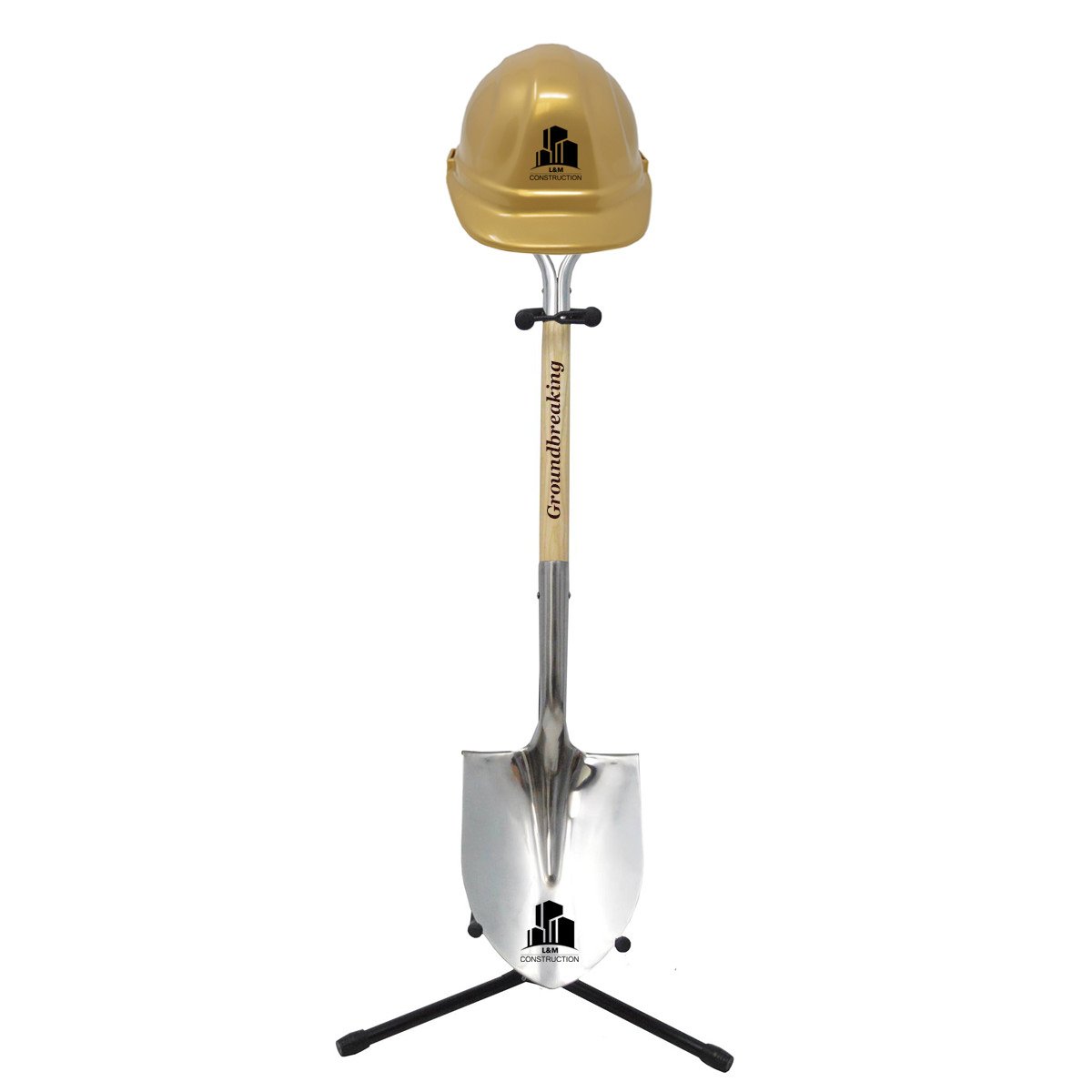
Present at the groundbreaking ceremony were important government figures like James T. Blair Jr., the Governor of Missouri during the late 1950s; Mayor Raymond R. Tucker, the Mayor of St. Louis at the time, would have played a key role in organizing and overseeing the groundbreaking ceremony, making his attendance expected; the architect of the Gateway Arch, Eero Saarinen would have been a central figure at the groundbreaking ceremony, as would have been Richard Bowser, the chief engineer overseeing the arch's construction, and representatives from the MacDonald Construction Company, which executed the project, would have been present to mark the beginning of construction.
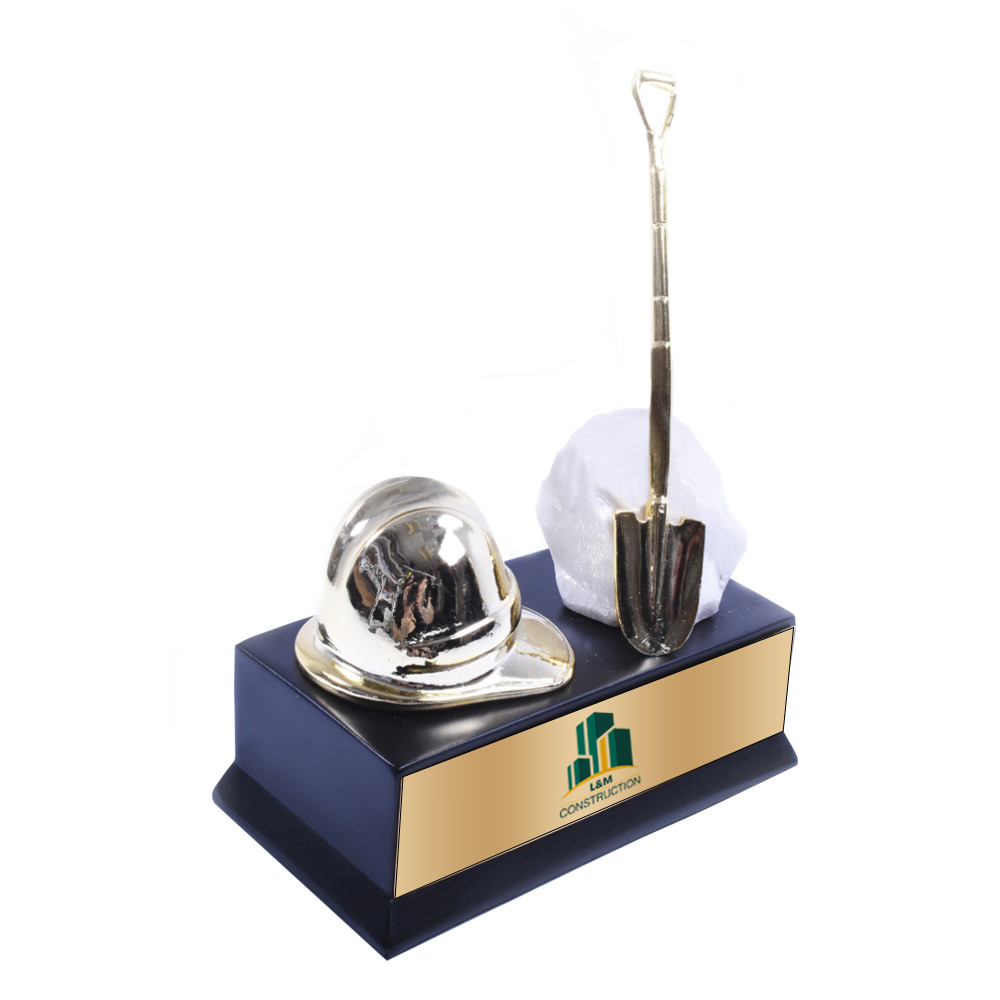
Shop CeremonialSupplies.com for all the essential tools necessary for a spectacular soil-turning ceremony! You’ll love our groundbreaking shovels and accessories like custom-branded hard hats, and custom-branded safety vests. Click here for a quote.
